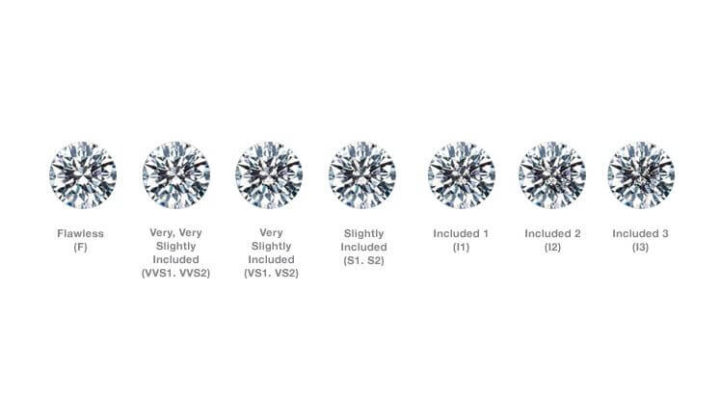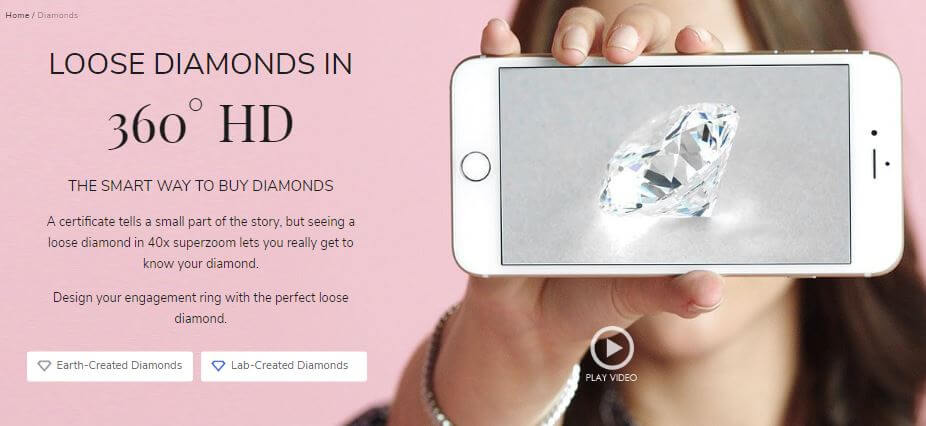Diamonds are the most expensive piece of gems or jewelry currently found on planet Earth. As the price of the diamond is according to its purity, you must know some essential points before buying a diamond.
It is tough to check the blemishes and inclusions on its surface without technology. In this situation, you can take the help of diamond clarity grades. These grades are beneficial for checking the clarity of the diamond. In this article, you are going to learn some basic things about diamond clarity.
What is diamond clarity?
Natural diamonds are present in the mantle layer of earth. The metal layer is approximately 80-120 miles from the ground surface of the planet. The natural temperature that diamonds need to face there is 2200 degrees Fahrenheit. The perfect condition diamonds take 1-2 billion years to grow in an ideal cut. But the majority of them will be imperfect with some surface blemishes and internal inclusions. For changing them in perfect shapes and cut, we use the technique of diamond clarity.
Diamond clarity is one of the essential quality metrics used for changing the visual appearance of diamonds. If the diamond has fewer surface blemishes and fewer inclusions, then it will apply for better clarity diamonds. The blemishes and inclusions are inversely proportional to diamond clarity.
- Internal Inclusions = 1 / Diamond Clarity
- Blemishes = 1 / Diamond Clarity
The clarity is the principal to detect the quality of a diamond. Therefore, one can’t check blemishes and internal inclusions with the naked eye. We use different types of microscopes and techniques to judge the quality of the diamond.
Diamond Clarity Grades:
Few of the diamond clarity grades are available under for your information. Apart from their names, their detailed instructions are also available in this article. So, if you are willing to grab the best piece of diamond for your wedding or engagement ring, then read the entire description below.
- Internally Flawless (IF)
- Inclusions (I1)
- Inclusions (I2)
- Slightly Included (SI1)
- Slightly Included (SI2)
- Very Slightly Included (VS1)
- Very Slightly Included (VS2)
- Very Very Slightly Included (VVS1)
- Very Very Slightly Included (VVS2)
The details of diamond clarity scales:
If you want to get information about the grades of diamond clarity, they are mentioned here with their full details. Do give them a thorough read if you are interested to know all essential information.
1. Internally Flawless (IF)
In internally flawless diamonds, you won’t see any imperfections. It will be free from all type of blemishes and inclusions. They are extremely rare to find; therefore, they are highly expensive.
2. Very Very Slightly Included (VVS1)
These types of diamonds are not expensive as compared to the flawless diamonds. The inclusions and blemishes can’t be seen under the microscopic power of 10X. These rings an excellent choice for engagement rings. You can find them easily from the diamond stores.
3. Very Very Slightly Included (VVS2)
These types of diamonds are barely visible under the microscopic power of 10X. After their visibility, they are tough to re-locate. You can use them as your wedding or engagement rings. Because they are one of the purest forms of diamonds with very less (Approximately genuine diamonds) inclusions.
4. Very Slightly Included (VS1)
In the very slightly included degree, the inclusions and blemishes are nearly visible under the magnification power of 10X. You can pinpoint the inclusions and flaws with the help of loupe. Yes, the impurities will be in front of your eyes within a few seconds. Although impurities are there in this diamond, they can be a handy choice for the wedding and engagement rings.
5. Very Slightly Included (VS2)
It is the second degree of very slightly included, known as VS2. They are relatively easily noticeable with the help of 10X microscopic power. You can see different types of inclusions and blemishes in different parts of the diamond. If you are thinking to choose them as your wedding rings, then they won’t be suitable for your partner. Although they are less expensive, they aren’t a good pick for a function and a gift.
6. Slightly Included (SI1)
You can easily find the inclusions and blemishes with the aid of jeweler’s loupe of 10X. Other than this, some types of compositions will be visible to your naked eyes like Asscher and Emerald. Therefore, they aren’t the right choice for you. If you want to buy a precious diamond cut ring, then don’t choose this one.
7. Included (I1)
If you will see some inclusions and blemishes on the surface of the diamond with naked eyes, it is “Included Diamond Clarity Degree.” These impurities can be on the visible cut surfaces. Therefore, easily visible to the naked eye. So, don’t do with this type of diamond. It is a waste of money.
These are some diamond clarity degrees that you must know before buying a diamond. Most of the jewelers will sell you an impurity form of diamond on the price of pure diamond. Therefore, understanding the clarity is a must thing before buying an expensive diamond. Apart from these things, there are many other things that you must clear before buying a diamond. These things are available on our website. You need to visit our website if you want detailed information about the diamonds. Last but the not least, all of them are readily available on our store.
Which Diamond Clarity is best?
After reading the descriptions of all diamond clarity grades, if you want to know which one is best, then it is available in this paragraph. Most of the people assume that internally flawless or flawless diamond clarity is best from the rest ones. But it is not valid for all cases. Firstly, the internally flawless diamonds are hard to find because they are beautiful and rare with expensive price tags.
So, if you are looking for an engagement ring and your priority isn’t a top clarity diamond, you can choose VS1clarity diamond. They are also less expensive than that of Flawless diamonds. They also look pleasant and beautiful to the naked eyes as very slight inclusions are there in them. In short, you can say that the clarity of the diamond won’t matter that much.

Shane Carry, the enigmatic voice behind the captivating content of TheDiamondsRing.com, He is a seasoned gemologist and writer renowned for his expertise in the field of diamonds. With a career spanning over two decades, Carry has established himself as a leading authority on gemstones, garnering acclaim for his insightful analysis and compelling narratives.
Carry’s passion for diamonds was ignited at a young age, fueling a lifelong pursuit of knowledge in gemology and jewelry design. He holds degrees in both Gemology and Jewelry Design from prestigious institutions, where he honed his skills and deepened his understanding of precious stones.

